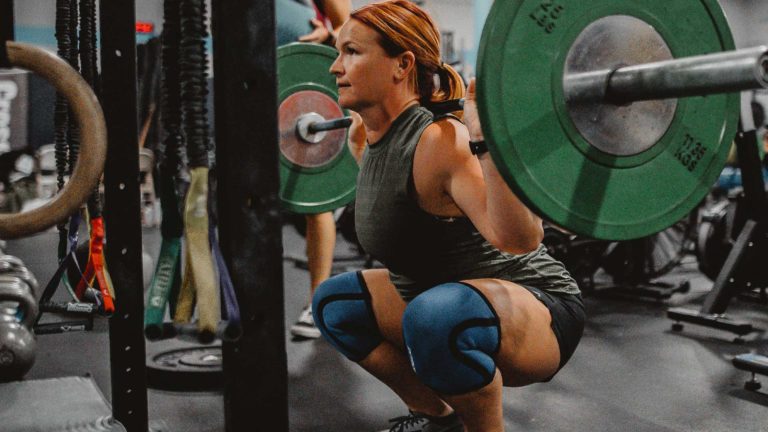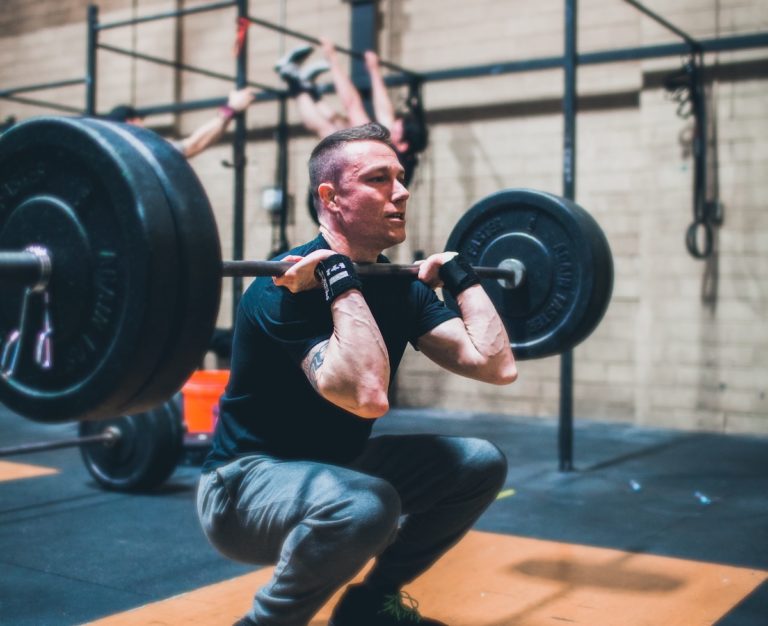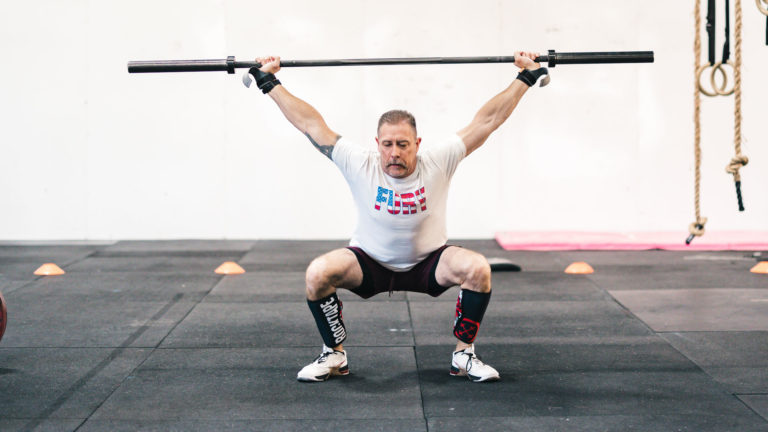When it comes to building lower body strength, muscle mass, athletic performance, joint resiliency, and bone density, few movement patterns rival the squat. In CrossFit, we regularly train a variety of squat variations — each with unique movement demands and benefits. Understanding the biomechanical differences between the back squat, front squat, and overhead squat enables athletes to refine their technique, target weaknesses more effectively, and train with a reduced risk of pain or injury.
Let’s break down each variation and the movement demands they place on the body.
 Back Squat: Load Behind the Center of Mass
Back Squat: Load Behind the Center of Mass
Where the barbell sits significantly impacts how the body must move when performing a squat. In the back squat, the load is placed behind the athlete’s center of mass — either high on the traps (high-bar) or lower across the scapula (low-bar). Because of this, athletes must lean the torso forward more than in other squat variations to keep the barbell centered over the midfoot.
That forward trunk lean increases the demand on hip mobility and reduces the need for ankle dorsiflexion compared to other squat styles. The back squat tends to allow for the heaviest loads to be lifted, with most athletes squatting 20–25% more than their front squat max. This variation also tends to emphasize the hips slightly more than others, though the overall muscle activation across the lower body remains similar between all squat types.

Hawkins at CrossFit NHPST | Photo courtesy of Hawkins
Front Squat: Upright Torso, Demanding Front Rack
The front squat shifts the barbell forward, resting it across the fingers, collarbone, and shoulders. To keep the bar secure, athletes must maintain a strong front rack with high elbows, which introduces mobility demands at the wrists, shoulders, and thoracic spine.
Because the load is now in front of the body, the torso remains more upright during the movement. This upright posture reduces hip flexion needs but increases ankle mobility demands, as the knees must track further forward to maintain balance.
As a result of this more vertical posture, the front squat often places slightly more emphasis on the quadriceps and slightly less on the hips and posterior chain compared to the back squat. However, these differences are frequently overstated. All squat variations train the same major muscle groups, just with subtle differences in emphasis depending on bar placement and joint angles.
A common limiter in the front squat is not leg strength, but thoracic spine extensor strength. It’s not uncommon for athletes to miss heavy front squats due to upper back rounding and elbows dropping, even as their legs continue to drive upward.
 Overhead Squat: The Ultimate Mobility and Stability Challenge
Overhead Squat: The Ultimate Mobility and Stability Challenge
The overhead squat is a technical beast. With the barbell positioned overhead and farther from the body’s center of mass, this variation introduces the highest demands for mobility, balance, and stability.
Grip width is a critical factor; most athletes will use their snatch grip, found by placing the bar in the hip crease with straight arms while one hip is flexed to 90 degrees. A wider grip provides mobility, but too wide a grip can compromise shoulder stability. Minor adjustments in stance width and toe-out angle can make a significant difference; therefore, athletes should explore the positions that allow for optimal depth and balance.
Because the goal is to stack the bar directly over the midfoot with an upright torso, athletes with limited ankle dorsiflexion or longer femurs may struggle. Olympic weightlifting shoes or heel elevation can help. The overhead squat also reveals limitations in thoracic spine mobility, core strength, and shoulder flexibility, particularly when squatting deeply with arms locked out overhead.
Often, athletes will find that their overhead squat is limited more by their ability to stabilize the load than by leg strength alone. This is why even relatively light weights can feel extremely challenging overhead.
Conclusion: Squat Smarter, Not Just Harder
Understanding the unique biomechanical demands of each squat variation empowers athletes to train with greater precision. Whether it’s poor thoracic mobility limiting your front squat, tight ankles holding back your overhead squat, or hip restrictions affecting your back squat depth, pinpointing the root cause is the first step to better performance and fewer injuries.
Want to know precisely where your mobility is holding you back? Check out the Ultimate Mobility Checklist to assess your movement and discover where to focus your efforts for the most significant return in strength, comfort, and efficiency under the barbell.
About the Author
 Zach Long is a Doctor of Physical Therapy at Onward Physical Therapy, the founder of TheBarbellPhysio.com, and co-founder of PerformancePlusProgramming.com. He specializes in mobility, strength, and prehab programming for fitness athletes. He is passionate about helping athletes optimize performance and prevent injury through evidence-based strategies and expert coaching.
Zach Long is a Doctor of Physical Therapy at Onward Physical Therapy, the founder of TheBarbellPhysio.com, and co-founder of PerformancePlusProgramming.com. He specializes in mobility, strength, and prehab programming for fitness athletes. He is passionate about helping athletes optimize performance and prevent injury through evidence-based strategies and expert coaching.